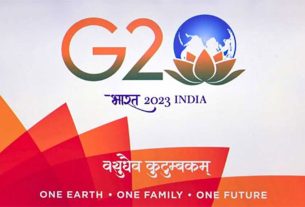It is widely understood that low-income countries and populations are more exposed and vulnerable to the effects of climate change—and therefore more badly in need of help with adaptation and resilience building. At the same time, it is also increasingly recognized that the current climate finance architecture struggles to put adaptation financing directly into the hands of people living in poverty and on the frontlines of the climate crisis. CGAP and others believe that the inclusive finance sector is a unique and underutilized means of bridging that gap. But there have been few data that can speak to the nexus of these issues at a global level – until now.
The newly released Global Findex 2025 survey sheds crucial new light on the exposure to and impact of climate change in low- and middle-income countries (LMICs), across different segments of the population, and across different levels of financial access. It offers a rich dataset that we are only just beginning to dig into, but which already tells a powerful story.
Extreme weather events are now very common across low-income countries
More than a third of adults (35%) in low-income countries personally experienced a natural disaster or extreme weather event in the last 3 years. In 10 particularly afflicted countries, it was more than half the population; 80% of these countries are in Africa.
Climate risk is disproportionately hitting poor countries and poor people
Across LMICs, the poorest 40% of the population were 1/3 more likely to have experienced a natural disaster than the richest 60%. This gap is particularly pronounced in lower-middle-income countries. But even the richest 60% of the population in low-income countries were more likely to have suffered a shock than the poorest population in middle-income countries (see Figure 1).
These shocks have major consequences for people’s livelihoods
More than two-thirds of people in low-income countries (LICs) that were hit by a natural disaster or extreme weather event suffered loss of income (69%) or assets (72%) as a result. Many suffered losses of both income and assets. Taken together, this means that nearly a quarter of all adults in LICs lost either income or assets due to natural disasters or extreme weather in the past three years—an astonishing number that underscores the scale and urgency of this problem.

Many people struggle to recover financially from these shocks
Nearly half (45%) of all people in LMICs said they would not be able to find extra money to deal with an unexpected financial expense. Among respondents who said they could, most people would go to family and friends—but these are also their least reliable source of emergency funding. This is especially true in a natural disaster or extreme weather shock, when family and friends are likely to be impacted themselves. Savings are more dependable, but only one-fifth of adults said they can rely on savings to deal with an unexpected expense.
But 3 in 4 adults affected by a natural disaster have a financial account
This impressive figure demonstrates the untapped role that local financial systems can play in facilitating access to adaptation finance and offering people the financial solutions to prepare for, cope with, and recover from these disastrous events.
For climate funders, this should help convey what an opportunity exists here for getting adaptation finance into the hands of vulnerable populations at scale, by channeling dedicated climate funding through this ecosystem as well as by increasing the adaptation relevance of the more than $1 trillion annually already being lent out by inclusive finance institutions worldwide.
For inclusive finance providers and their funders, it underscores the pressing need for financial institutions to step up and more deliberately bolster the climate adaptation and resilience of their clients. The impact on incomes and assets also highlights that this need is not just about a moral imperative or social mission, but the future of inclusive financial service providers’ businesses themselves.
It also offers another pressing reason for the effort to continue expanding financial access to the 1.3 billion people who are still unbanked. And the challenge is getting harder: As CGAP has already written about, climate risk is already forcing financial institutions to back away from risky segments and geographies—a process that will only continue unless FSPs and their supporters can work with the climate change community to help clients adapt and grow resilient to climate change.
Taken together, this all points to an opportunity that neither climate adaptation nor inclusive finance stakeholders can afford to pass up. The potential for driving concrete change at scale is clear, and much of what is needed to harness it is already in place. All it takes is a concerted effort to build bridges between the two spaces and accelerate the innovation that is already starting to happen.
The road ahead is clear
In the coming weeks, CGAP will work with the Findex team to dig deeper into these data to explore the distribution of climate risks and impacts as well as the intersection between shocks, resilience, and financial services.
These findings also underscore the vital importance of generating bottom-up data on climate adaptation. The adaptation finance space today is limited to a top-down, supply-side analysis of how much money is going to different sectors, actors, and geographies. If we want to truly understand not just how people are impacted by climate change, but whether they have access to the information, tools, and financing they need to adapt and grow resilient, then a new type of data is required that starts with the people themselves.


